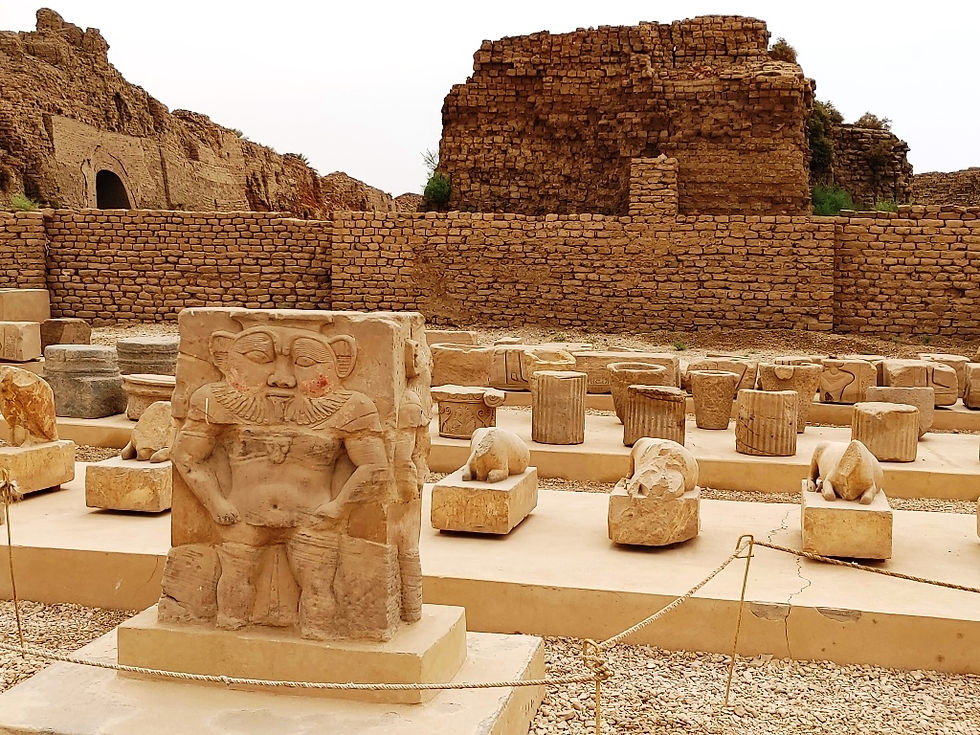Temples, Papyrus, Sphinxes and more Vendors
- pswartz
- Jun 6, 2023
- 3 min read
Updated: Jun 11, 2023


We have a very busy day today. We start with cruising through one of the locks by the Aswan dam. And, of course, when you slow down for one of these locks, it’s the perfect time for vendors in their small boats to row up to our vessel and start selling their goods. If you see something you might like, they throw it up four decks for your inspection. Don’t like it—throw it back. You like it—start the price haggling to see if you can agree on a price (usually you can). When you

arrive at an agreeable price, they will toss up a weighted plastic so you can put in your money and send it back down. Easy as that!

At any rate, we are off to the Temple of Karnak, a marvelous ancient temple located in Luxor. In today’s world, we complain if a takes longer than a few months to build a building. Well, this temple took a bit longer. It was built over a period of 2,000 years, starting from the Middle Kingdom to the Ptolemaic Dynasty. This massive temple complex is one of the largest religious buildings ever made, and is dedicated to the Theban gods Amun, Mut, and Montu.

The temple is divided into several precincts with different temples and chapels dedicated to different gods and pharaohs. You definitely have to have your Egyptologist with you to keep it all straight. It has colossal statues, towering columns, intricate carvings, and extravagant decorations that reflect the grandeur of ancient Egyptian architecture and art. One of the most impressive features of the Temple of Karnak is the Hypostyle Hall, which boasts an impressive forest of over 130 towering columns. (See the photos).

After visiting the temple, it was time for a change of pace—and change we did. We headed to the Papyrus Institute in Luxor, a fun and unique destination that offers visitors a fascinating insight into the ancient art of papyrus making. Here, we see how papyrus is made, from the harvesting of the reeds to the final product that is covered in colorful hieroglyphics and illustrations. We even got to paint our own papyrus creation with our name written in hieroglyphics to take home as a one-of-a-kind souvenir! This was a great way to learn something new about ancient Egypt while getting our hands dirty in the process.


After a late lunch, we set off to the Temple of Luxor, a spectacular ancient temple located in the city of Luxor, Egypt. It was built over a period of hundreds of years, with construction beginning around 1400 BC during the reign of Amenhotep III and continuing through to the reign of Tutankhamun (King Tut) and beyond.

The temple is dedicated to the god Amun, who was one of the most important gods in ancient Egyptian religion. It, of course, like many of the temples we have seen features a grand entrance, towering columns, intricate carvings, and glowing statues that tell the stories of the pharaohs and the gods. But here there is a very unique feature— the avenue of sphinxes that leads up to the entrance of the temple. This majestic avenue is lined by hundreds of sphinx statues, that stretch for over a mile between this temple and the Temple of Karnak. You can walk down this avenue between these massive sphinxes for as far as the eye can see. This was certainly a great way to end our day.




























Comments